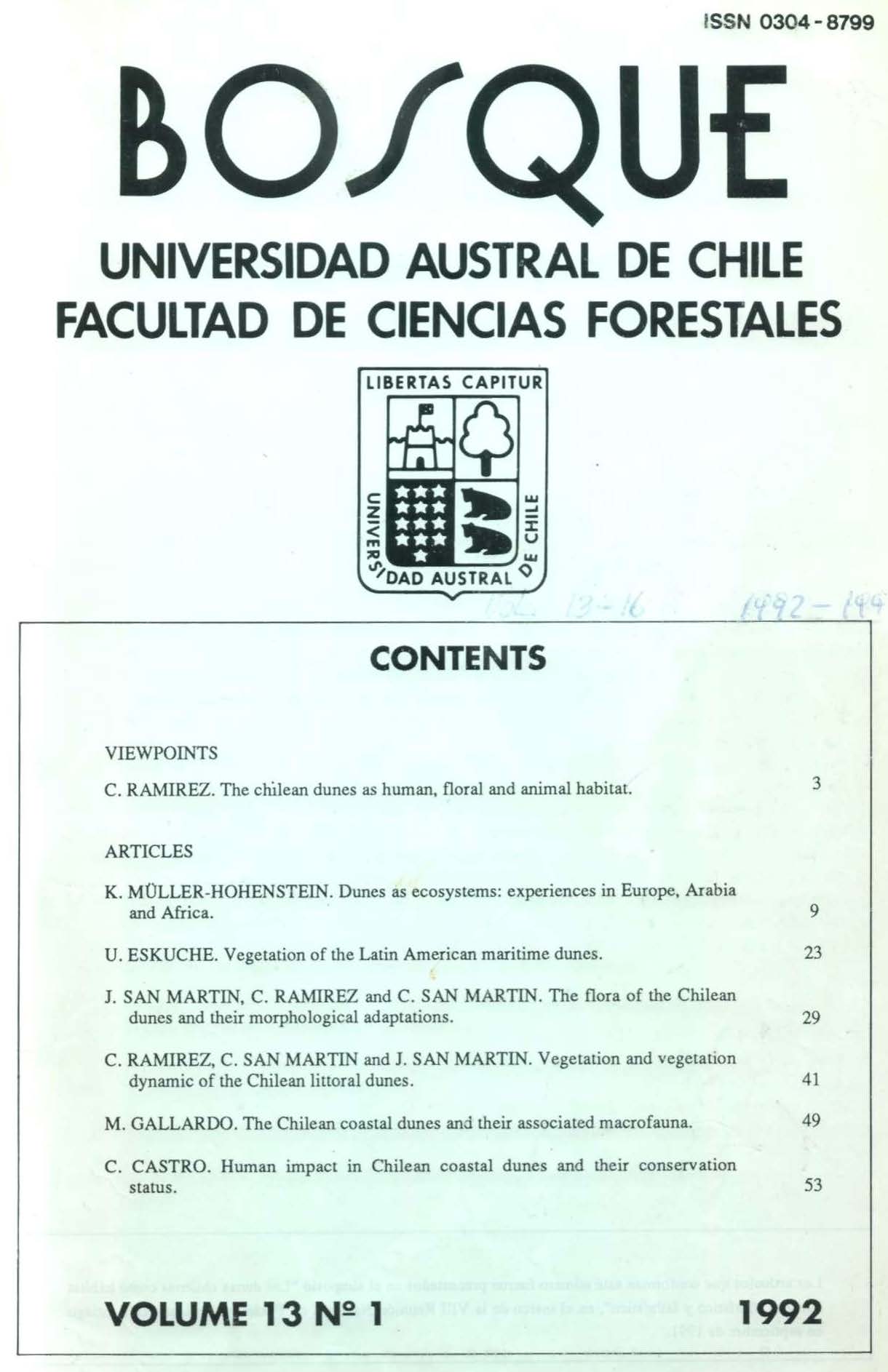The Chilean coastal dunes and their associated macrofauna
Main Article Content
Abstract
The Chilean coastal dunes are recent geomorphological formations increased by antropogenic interventions and distributed, principally, between Coquimbo and Chiloé. In general, the flora and macrofauna that have colonized the dunes are less diverse than in the surrounding areas and do not present special morphological adaptations. Instead, they present a greater physiological tolerance range to the prevailing conditions of draught. Thus, no fauna which is typically characteristic of the dunes with specific or subspecific differentiations can be described. The coastal dunes have been colonized by auchtochtonous and introduced or migratory vertebrates. For the vertebrates which perceive the environment as one of fine grain with wide home ranges, dunes do not represent habitat discontinuities. On the contrary, for the habitat specialists dunes represent unsheltered environments in which they behave as transient elements. Therefore, the variations in the latitudinal faunistic composition of the dunes reflect biogeographic replacements that respond to other factors. Unstabilized dunes can overlap with the habitat of vertebrates with subterranean habits, sedentary behaviour or restricted roving, eventually turning them into permanent faunistic elements subject, from then on, to new selective pressures.

